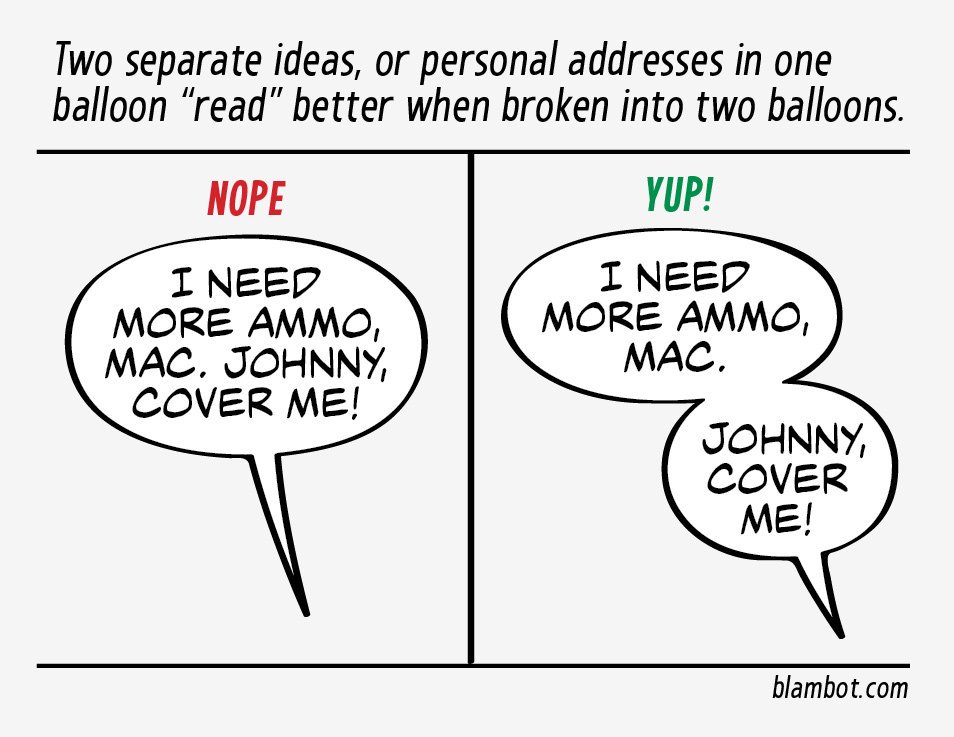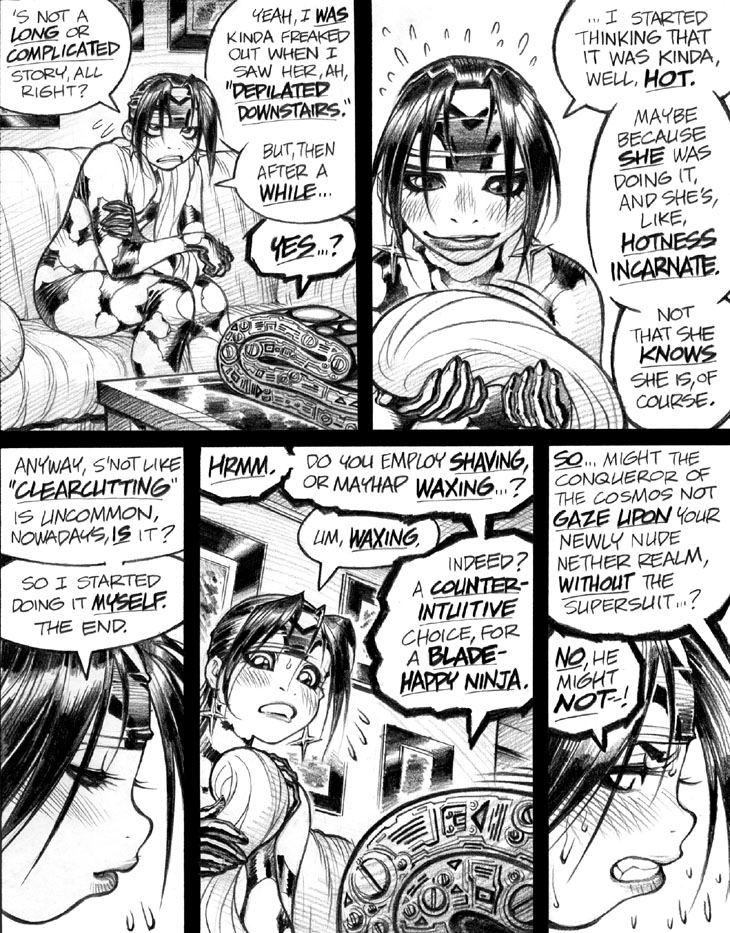Time for another random rant about comics technique, once again harvested from my Twitter feed! Said rant does have some bearing on the Empowered page above, though.
T’other day, I read a comic in which the writer repeatedly stuffed 4—or more!—sentences into a single word balloon. Very bad call by our wordy wordsmith, I gotta say! Personally, I get antsy putting even 2 whole sentences into a word balloon—if possible, I like to break up every sentence into a separate word balloon. (Note that, in the somewhat wordy Empowered page above, I nonetheless followed that practice for the most part.)
IMHO, rolling with a single sentence per word balloon makes for better narrative flow, and adds focus and impact to individual lines. Writers: Each line of your sparkling, precious, painstakingly crafted dialogue will stand out more clearly if allotted its own word balloon. Multiple sentences stuffed into a single word balloon become a reader-unfriendly mess. Your lines get lost in the visual swell of verbiage.
UPDATE: Ace letterer Nate Piekos sums up the issue I'm blithering and/or blathering about with a single image:

Break sentences into separate word balloons, and maybe the letterer has a chance at squeezing ’em into what little space the artist left. A word balloon containing 4+ sentences is gonna be a bulky, bloated bolus forcing the letterer into awkward, character-crowding compromises. Note also that the teeny-ass default font size used in most comics lettering encourages Wordy Wordsmiths into indulging a lazy approach to (excessive) exposition. Self-indulgent writers can natter on freely with bloated dialogue, counting on that tiny font size to compensate for their excesses.
Writers: Ask yourself, “What is the absolute bare minimum of dry, characterization-free, reader-unfriendly exposition I can use here?” Most exposition in comics is character-neutral narrative bricklaying. Anyone could be rattling off this key dialogue to further the story. If you can’t skew the necessary exposition to fit a character’s speech patterns, then at least keep the raw, dry text as brief as possible. Rule of thumb for comics writers: I’ve found that you can always, always get by with less exposition than you might think. TRIM IT DOWN, K?
When I posted that rant online, someone eventually replied with, “But you’ve done that before…” Well, yeah, buddy, that’s how you learn what doesn’t work in comics: You bungle and botch your own work with approaches that fail, and eventually learn what techniques do and don’t suit your storytelling. I’ve committed many—in fact, all—of the comics-related sins I rail about so bitterly; I preach the comics-technique gospel from bitter, hard-earned, failure-intensive experience, folks. In fairness to Past Me, though, I’m not sure how often I ever stuffed 4 sentences in a word balloon, which is a practice that never appealed much to me. Even when I slathered on waaaay too much dialogue in my older comics, I normally did so with word balloons of 1 or 2 sentences, tops. (Kinda like panel 3 above, which sports a wee bit too much verbiage for a single panel.)
-Adam Warren

